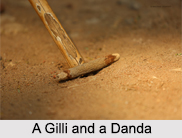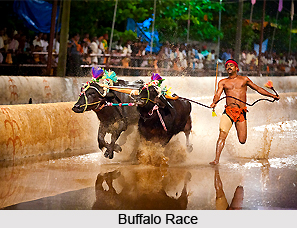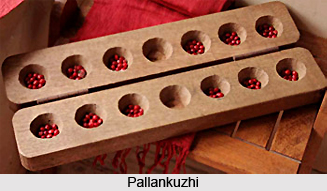 An intriguing precursor to the game of cricket, gilli danda is an amateur sport played across various parts of South Asia. The game requires two wooden sticks; the large one is called a danda, which is used to hit a smaller oval shaped piece of wood called the gilli.
An intriguing precursor to the game of cricket, gilli danda is an amateur sport played across various parts of South Asia. The game requires two wooden sticks; the large one is called a danda, which is used to hit a smaller oval shaped piece of wood called the gilli.
Etymology of Gilli Danda
Gilli Danda is derived from the word ghatika, which literally means tip-cat in English. The history of the sport dates back to the Mauryan era but legends say that snippets of the sport are mentioned in the epic called the Mahabharata. The Kauravas along-with the Pandavas are said to have played gilli-danda together.
Names of Gilli Danda
The sport of gilli-danda is still known to India and its neighbouring countries like Bangladesh, Sri Lanka and Nepal. In Bangladesh, the sport is known as danguli khela, where the longer stick or the danda is supposed to be about 1.5 ft; and the shorter stick about 6 inches. Whereas, in Nepal, gilli danda is known by the name of dandi biyo and until 23rd May, 2017 it was considered to be the unofficial national game of Nepal. In India, gilli danda is known by different names; in Tamil it is known as Kitti Pul, in Bengali as Danguli, in Kannada as Chinni Dandu, in Marathis as Viti Dandu and in Telegu as Gooti Billa etc.
 Rules for playing Gilli Danda
Rules for playing Gilli Danda
A popular game in the rural parts of India with variations in name and scoring methods, the game of gilli danda can be played among all age groups. There are mainly two teams required to play this game- the batting team and the opponent team. With a coin toss, the team which wins decides on either the batting or the fielding. After having decided that, a circle is made with a hole in the centre where the batsman bats. The player of the batting team will use danda to bat, while fielding team is spread in the ground to field. There is no bowler in this game. The batsman is supposed to balance the gilli in an inclined position and using the danda the player hits at one of the tapered ends of the gilli and as the gilli flips in the air the player is supposed to quickly strike it. After the gilli has been struck, the opposing players need to return to the circle or, in the best case, catch it in mid-air without hitting the ground. This was believed to have later evolved into a "Catch Out" in cricket and baseball.
If the batsman strikes the gilli and no fielder is able to catch, then the danda is used to measure the distance from the circle to the point where gilli fell. Each danda"s length adds one point to the batting team. And if the fielder catches the gilli before it touches the ground, then the batsman is out. In case, the batsman is unable to strike the gilli in 3 continuous chances, then too he is out. There are no specific dimensions of gilli danda and it does not have limited number of players. After the batting team, the opponent team is given the chance to bat and the entire process is repeated. The team with the maximum score is said to win the match.
The Indian Gilli Danda Federation
Registered under the trust act of government, the Indian Gilli Danda Federation is a non-profit, non-government organisation. It is affiliated to the Gilli Danda International Federation, approved by the Association for National Sports Federations, member of the Association for International Sports for All, and is recognized by the International Olympic Committee-IOC, WHO, ICSSPE & UNESCO. In the 2018 Ambedkar Games, which held during the month of May, the traditional sport of Gilli Danda was included.
Gilli Danda in Popular Culture
The documentation of the sport gilli danda is very little, except that it has been played on the subcontinent since time immemorial. In the pages of novels and short stories, like Anandamayee Singh"s "As it happened in 1942" and Prem Chand"s "Gilli-Danda", one can see that it is a game associated with reminiscence. The sports-drama Marathi movie called "Vitti Dandu" produced by Ajay Devgan, is also based on the gilli danda game.



















